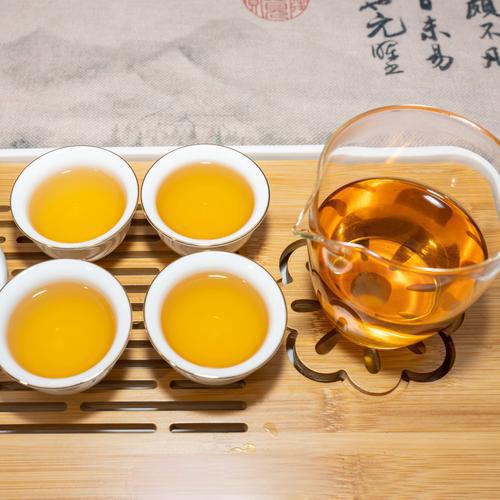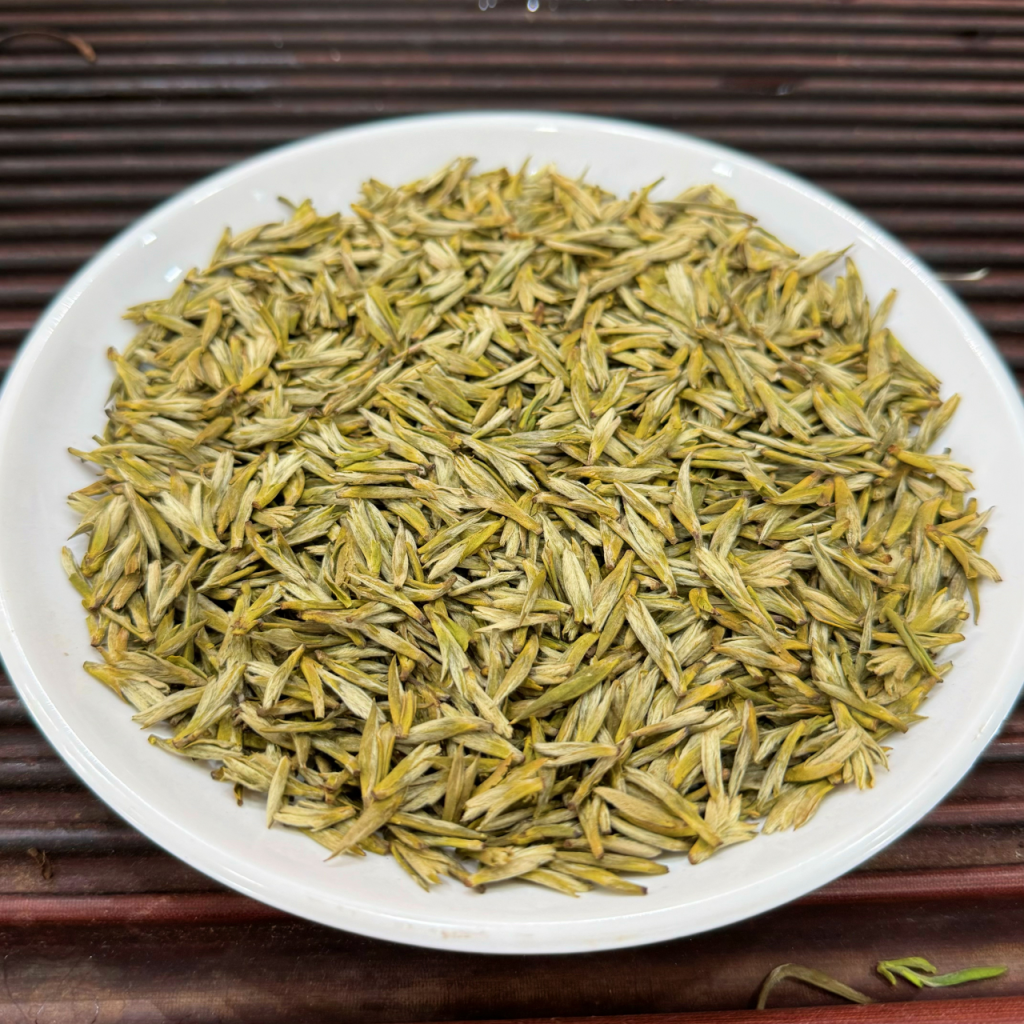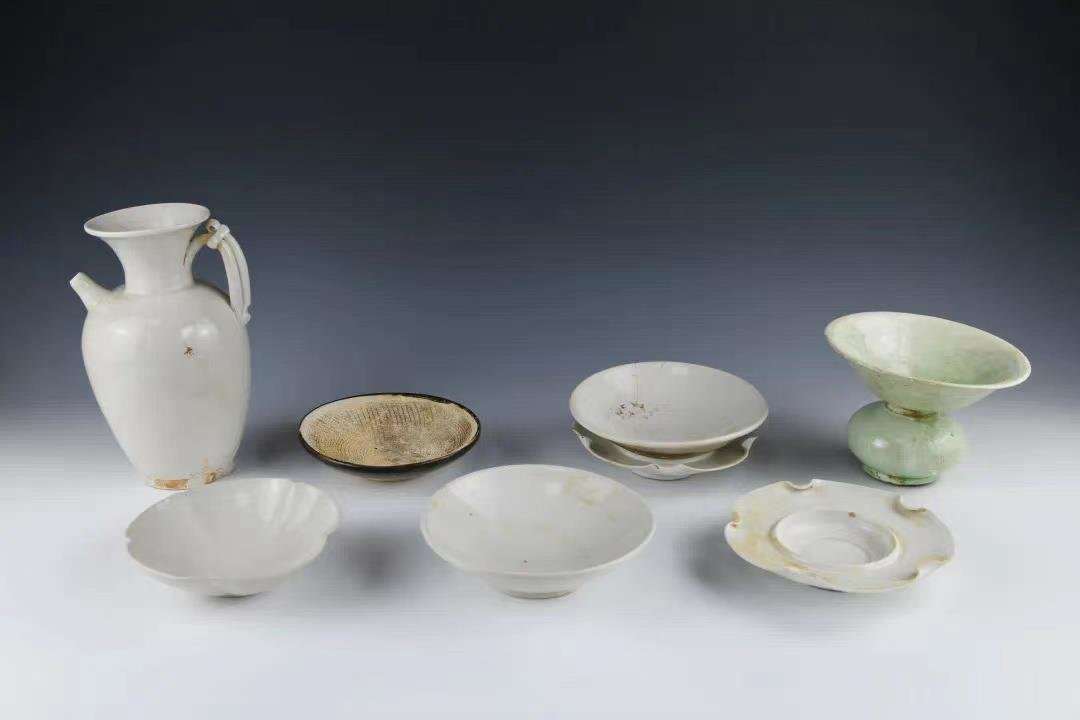Yellow tea, a rare and often overlooked treasure in the tea world, occupies a unique niche between green and white teas. Its subtle “mellow yellow” hue and soft, floral-sweet flavor—achieved through a labor-intensive “sealed yellowing” (men huang) process—demand teaware that respects its fragility while elevating its nuances. Unlike bold black teas or earthy pu-erhs, yellow tea thrives in tools that balance warmth, aroma, and visual poetry. Here’s how to curate the perfect brew.

1. Porcelain Gaiwans: The Gold Standard for Purity
In Junshan, the birthplace of Yellow Buds (Junshan Yinzhen), porcelain gaiwans reign supreme. Their non-porous, neutral material ensures no interference with the tea’s delicate notes—think fresh corn silk, melon, or faint apricot.
Why They Shine:
- Temperature Control: Porcelain retains heat gently, preventing the low-temperature brew (75–80°C/167–176°F) from scorching tender buds.
- Aroma Amplification: The wide opening and lid allow you to inhale the tea’s evolving fragrance as it steeps, from grassy to honeyed to faintly nutty.
- Visual Delight: White porcelain provides a pristine backdrop to admire the tea’s pale golden liquor and the slow unfurling of slender leaves.
Pro Tip: Use a gaiwan with a 120–150ml capacity for 3–4 grams of tea, adjusting steeping time (1–2 minutes) to taste.
2. Glass Teapots: A Window to the Brew’s Transformation
For yellow teas with large, downy buds—like Huoshan Huangya or Mengding Huangya—glass teapots turn brewing into a spectacle. Watching the leaves descend and swirl in the water adds a layer of mindfulness to the ritual.
Advantages:
- Heat Resistance: Borosilicate glass withstands hot water without warping.
- Flavor Clarity: Unlike clay, glass won’t absorb or alter the tea’s profile, making it ideal for assessing quality.
- Modern Aesthetic: Sleek designs complement minimalist spaces, appealing to tea novices and design enthusiasts alike.
Pairing Suggestion: Serve in thin, hand-blown glass cups to appreciate the tea’s shimmering hue.
3. Thin-Walled Ceramic Cups: A Tactile Experience
In Chinese tea culture, the cup matters as much as the pot. Opt for thin-walled ceramic cups—either white or pale celadon—to accentuate yellow tea’s nuances.
Key Features:
- Temperature Sensitivity: Thin ceramic cools slightly faster than porcelain, preventing bitterness in delicate brews.
- Texture: A smooth interior enhances the mouthfeel, while a slightly textured exterior improves grip.
- Size: Small cups (50–80ml) concentrate aromas and encourage slower sipping.
Ritual Touch: Hold the cup with both hands to warm your palms—a nod to the Chinese tradition of “warming the heart with tea.”
4. Yixing Clay: For the Adventurous Connoisseur
While Yixing zisha clay is traditionally paired with aged oolongs or pu-erh, some aficionados experiment with it for aged yellow teas. The porous clay gradually absorbs the tea’s essence, deepening its complexity over time.
Cautions:
- Dedication: Use a dedicated pot for aged yellow tea only to avoid flavor cross-contamination.
- Heat Management: Thicker clay may oversteep tender buds; opt for smaller pots (80–100ml) and shorter infusions.
When to Consider: Aged yellow teas with notes of dried pineapple, honey, or wildflowers may benefit from Yixing’s “seasoning” effect.
5. Bamboo or Wooden Tea Trays: Grounding the Ritual
While not directly brewing tools, natural trays anchor the experience. Bamboo or rosewood trays catch drips, protect surfaces, and evoke the tea’s organic origins.
Aesthetic Bonus: Pair with a tea pet (a small ceramic figurine) to “feed” with leftover tea, a whimsical Chinese tradition.
Final Considerations: Beyond the Basics
- Water Quality: Use spring or filtered water to avoid masking the tea’s subtlety.
- Mindful Steeping: Oversteeping yellow tea can turn sweetness into astringency; start with 1 minute and adjust.
- Cultural Context: In some Anhui households, yellow tea is brewed in a covered ceramic bowl (cha he) to retain heat and honor ancestors.



